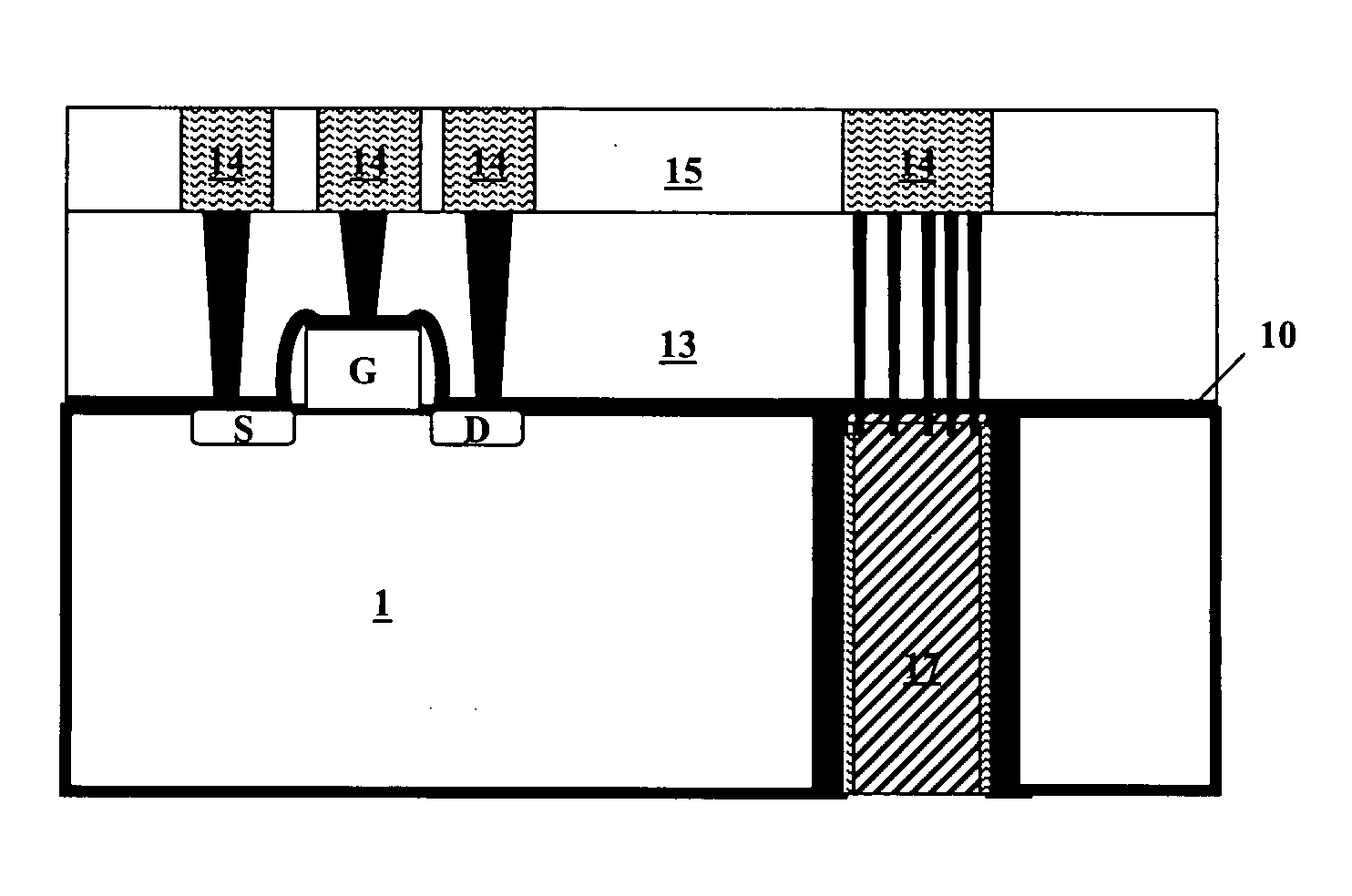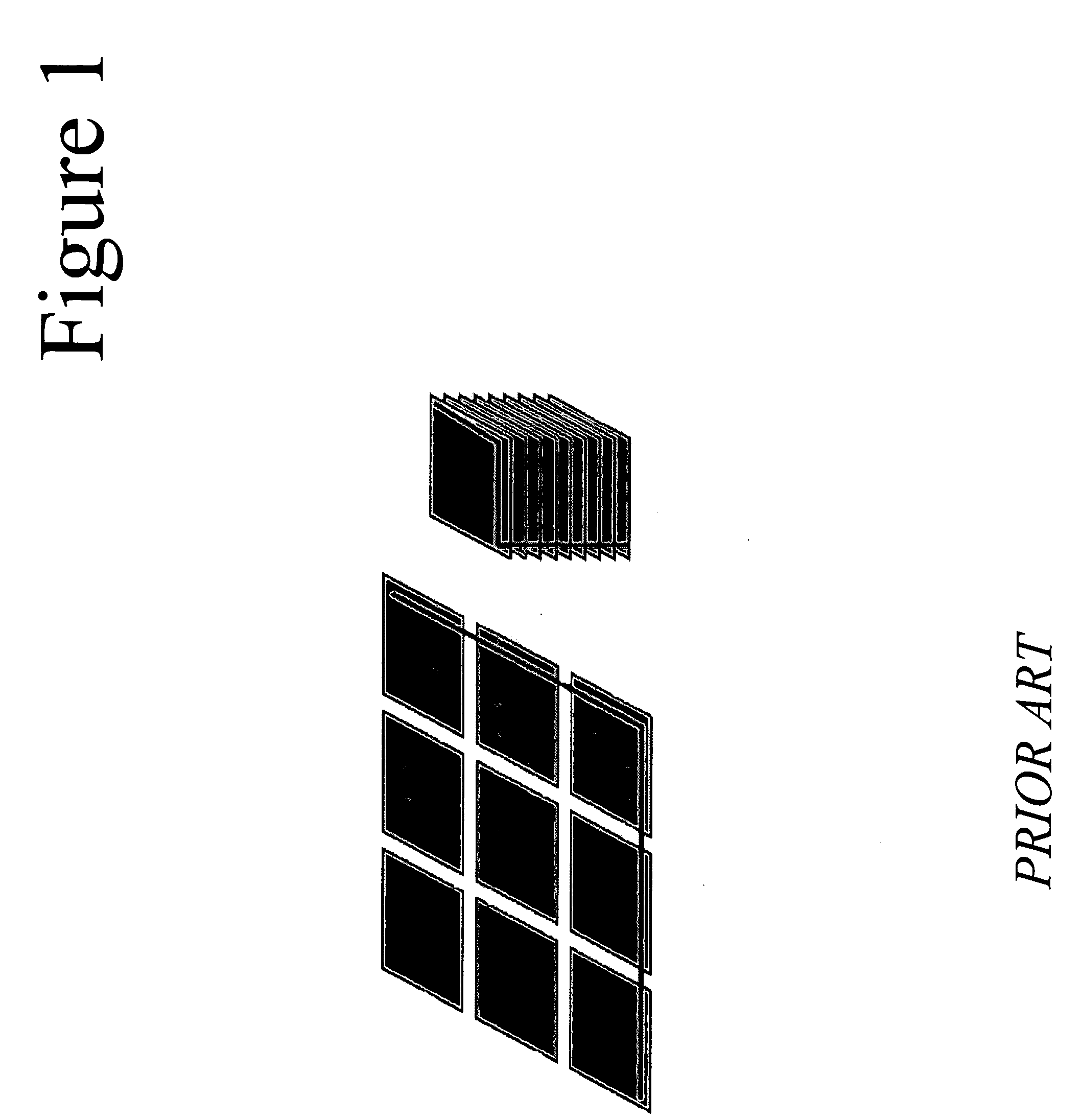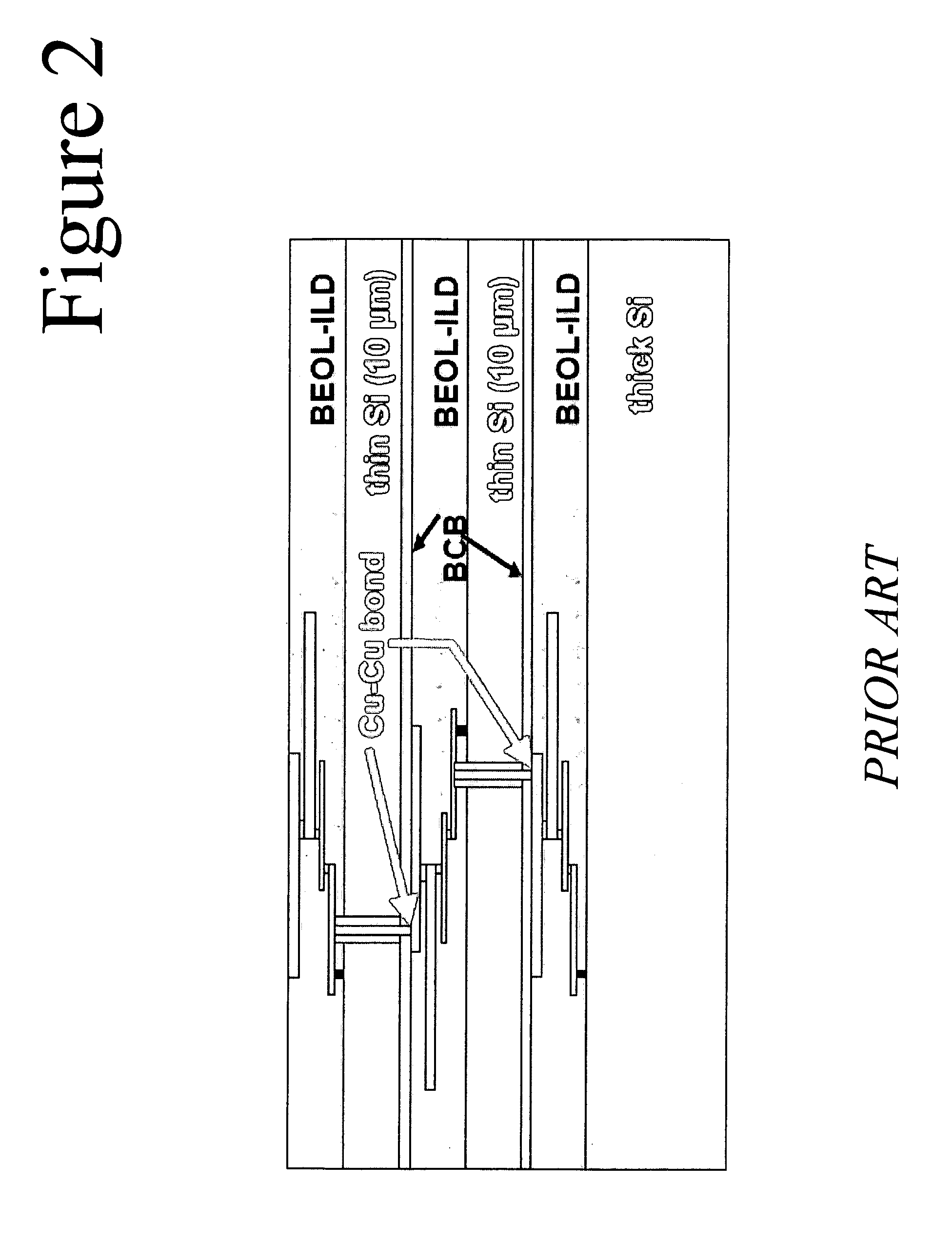Formation of deep via airgaps for three dimensional wafer to wafer interconnect
a technology of air gap and deep via, which is applied in the direction of solid-state device manufacturing, electric apparatus, semiconductor/solid-state device manufacturing, etc., can solve the problems of reliability and yield problems, the influence of rc delay, and the inability to spin-on or cvd low-k dielectrics to achieve the effect of wasting valuable surface area
- Summary
- Abstract
- Description
- Claims
- Application Information
AI Technical Summary
Problems solved by technology
Method used
Image
Examples
Embodiment Construction
[0065] The following description and examples illustrate a preferred embodiment of the present invention in detail. Those of skill in the art will recognize that there are numerous variations and modifications of this invention that are encompassed by its scope. Accordingly, the description of a preferred embodiment should not be deemed to limit the scope of the present invention.
[0066] The term “sacrificial,” as used herein, is a broad term and is used without limitation, as a material or a layer that is deposited temporarily, and that is not supposed to remain, at least totally, in the final device, or a material or layer that is destined to be removed, at least partially, during the process of fabricating a device.
[0067] The term “spacer,” as used herein, is a broad term and is used without limitation, as a material or layer that is deposited o the uncovered parts of the sidewalls of the via that is partially filled with a sacrificial material, in order to narrow the opening of...
PUM
 Login to View More
Login to View More Abstract
Description
Claims
Application Information
 Login to View More
Login to View More - R&D
- Intellectual Property
- Life Sciences
- Materials
- Tech Scout
- Unparalleled Data Quality
- Higher Quality Content
- 60% Fewer Hallucinations
Browse by: Latest US Patents, China's latest patents, Technical Efficacy Thesaurus, Application Domain, Technology Topic, Popular Technical Reports.
© 2025 PatSnap. All rights reserved.Legal|Privacy policy|Modern Slavery Act Transparency Statement|Sitemap|About US| Contact US: help@patsnap.com



